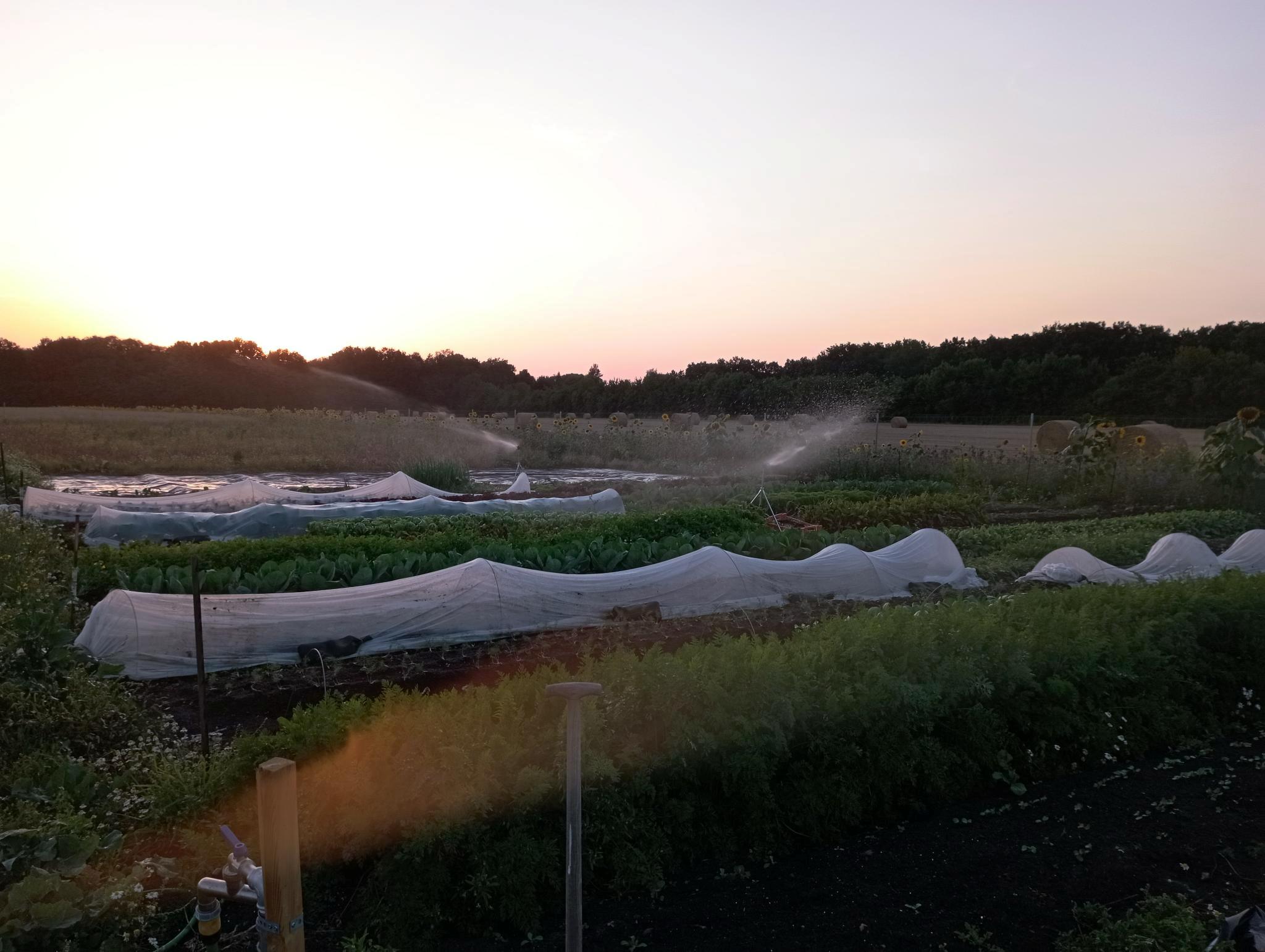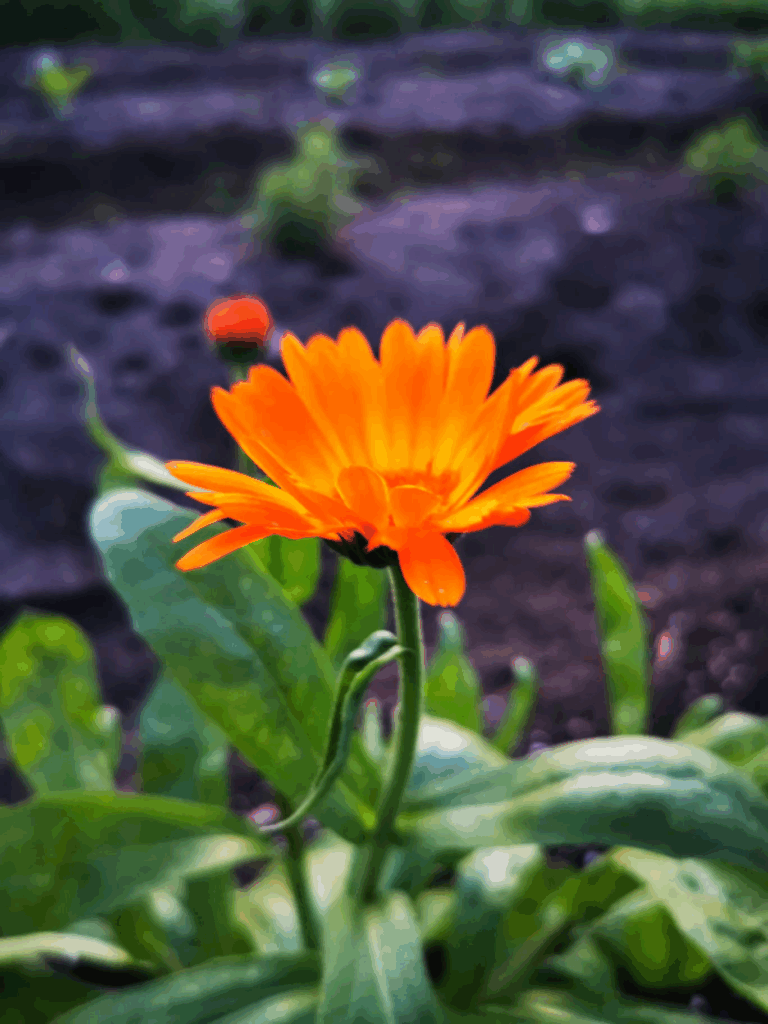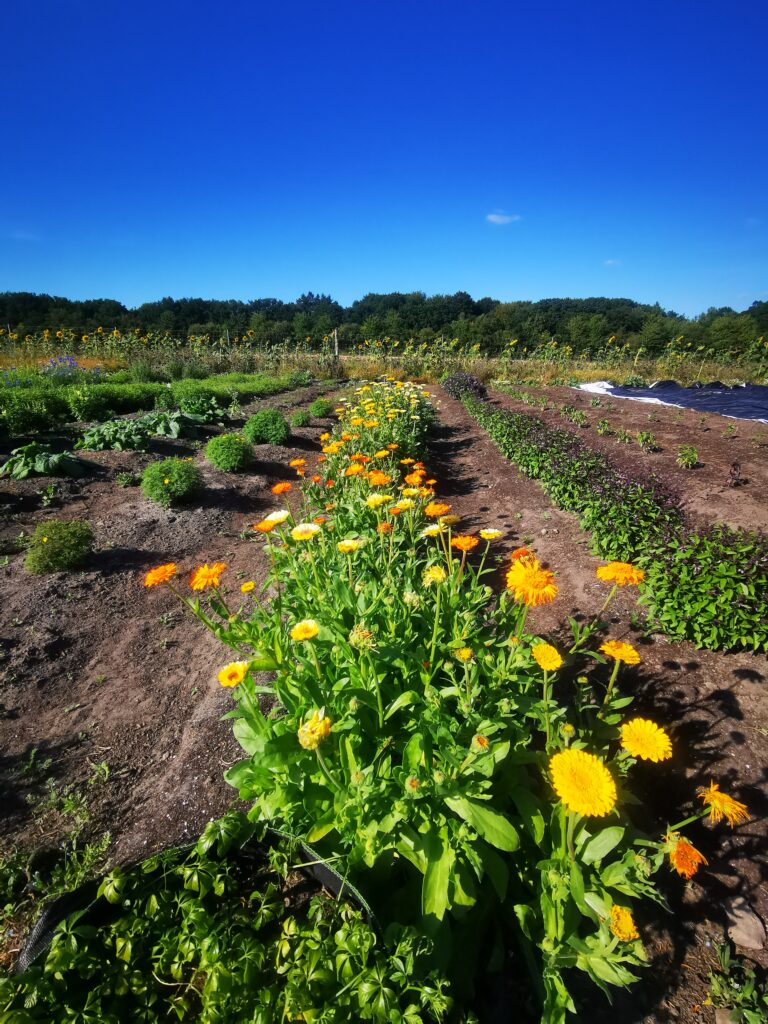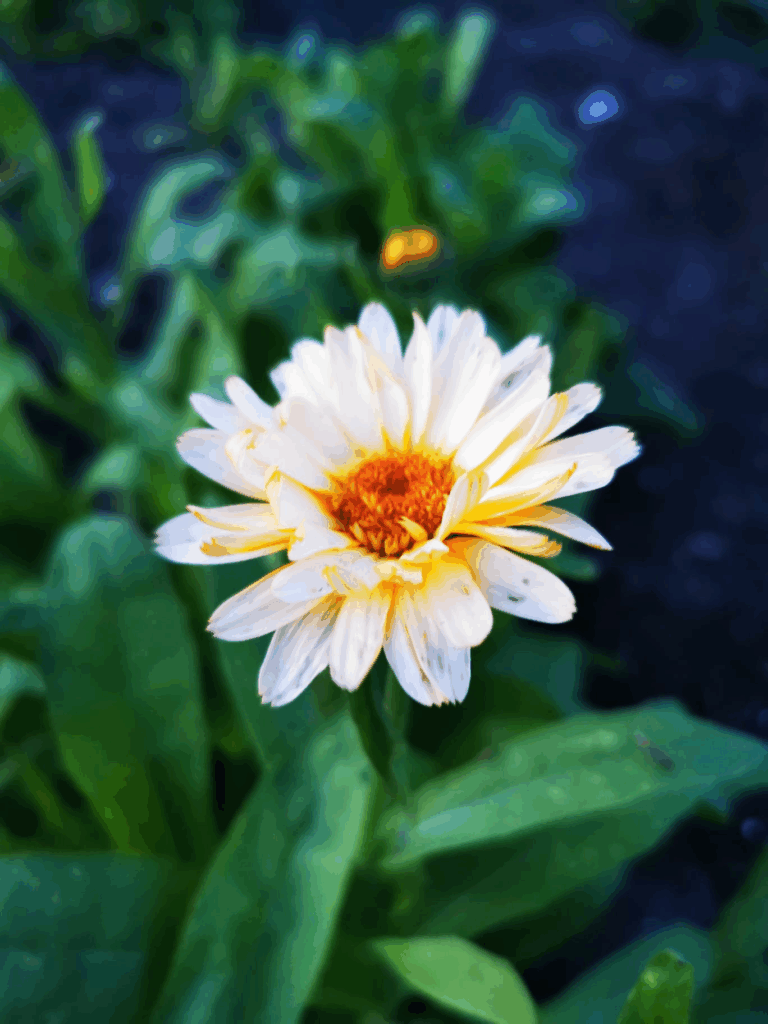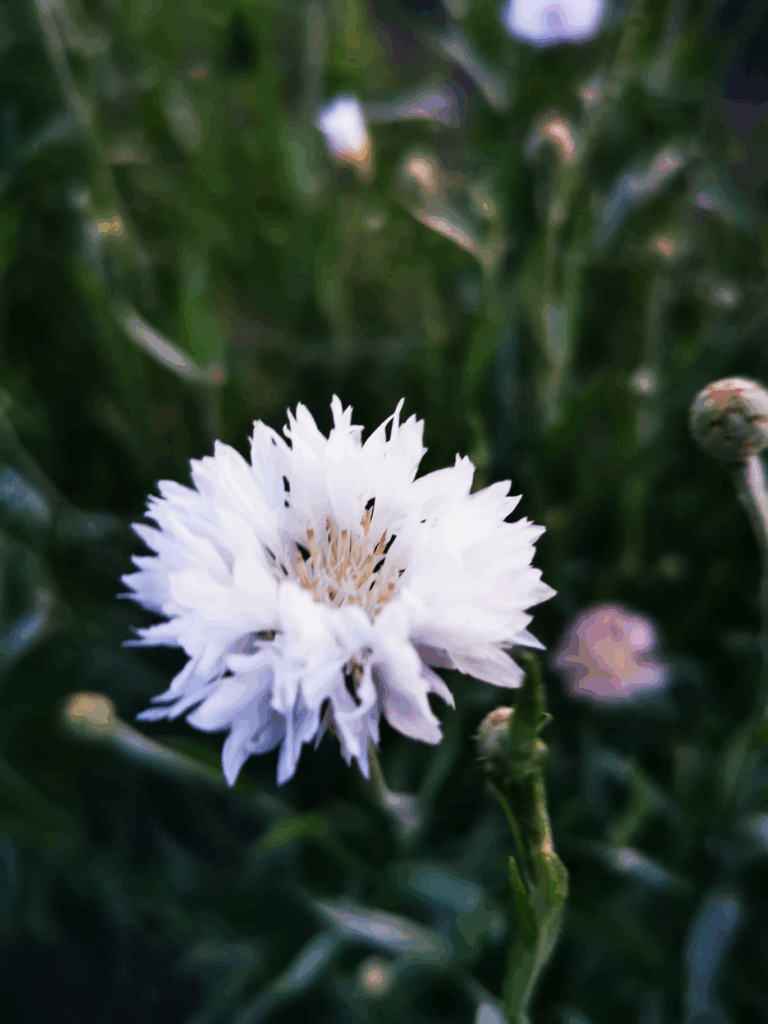The market garden on an afternoon in August 2025. Photo: Lars Wiemer
There is currently a lot of activity on our test area: Numerous crops are currently growing and blooming in the herb garden – including cinnamon basil, white and blue cornflower, marigold (varieties: Mix Kinglet and Ivory Princess), Vietnamese coriander and lemon verbena. The colorful mixture serves as a source of pollen and nectar for a variety of pollinators. The flowering strip that frames the test area is also regularly visited by bumblebees, wild bees and other insects.
In another part of the area, the flax (variety: Tango) was harvested (pulled) in recent weeks and then retted in the field. The flax is moistened by dew and dried again in the sun during the day. This sequence creates suitable conditions for microorganisms that dissolve the wooden stem portion from the valuable fiber material inside. This breaks down the fibers and makes them usable.
Im Marktgarten werden Salat, Spinat, Rucola, Petersilie und Pak Choi geerntet. Diese Woche verließen auch die ersten Karotten den Boden. Der alte Folientunnel hat den stürmischen Frühling nicht überstanden und wurde durch einen neuen ersetzt, der direkt über die dort wachsenden Tomaten und Gurken gebaut wurde. Für die Ernte im Herbst wurden Grünkohl, Mangold und Zucchini gepflanzt.
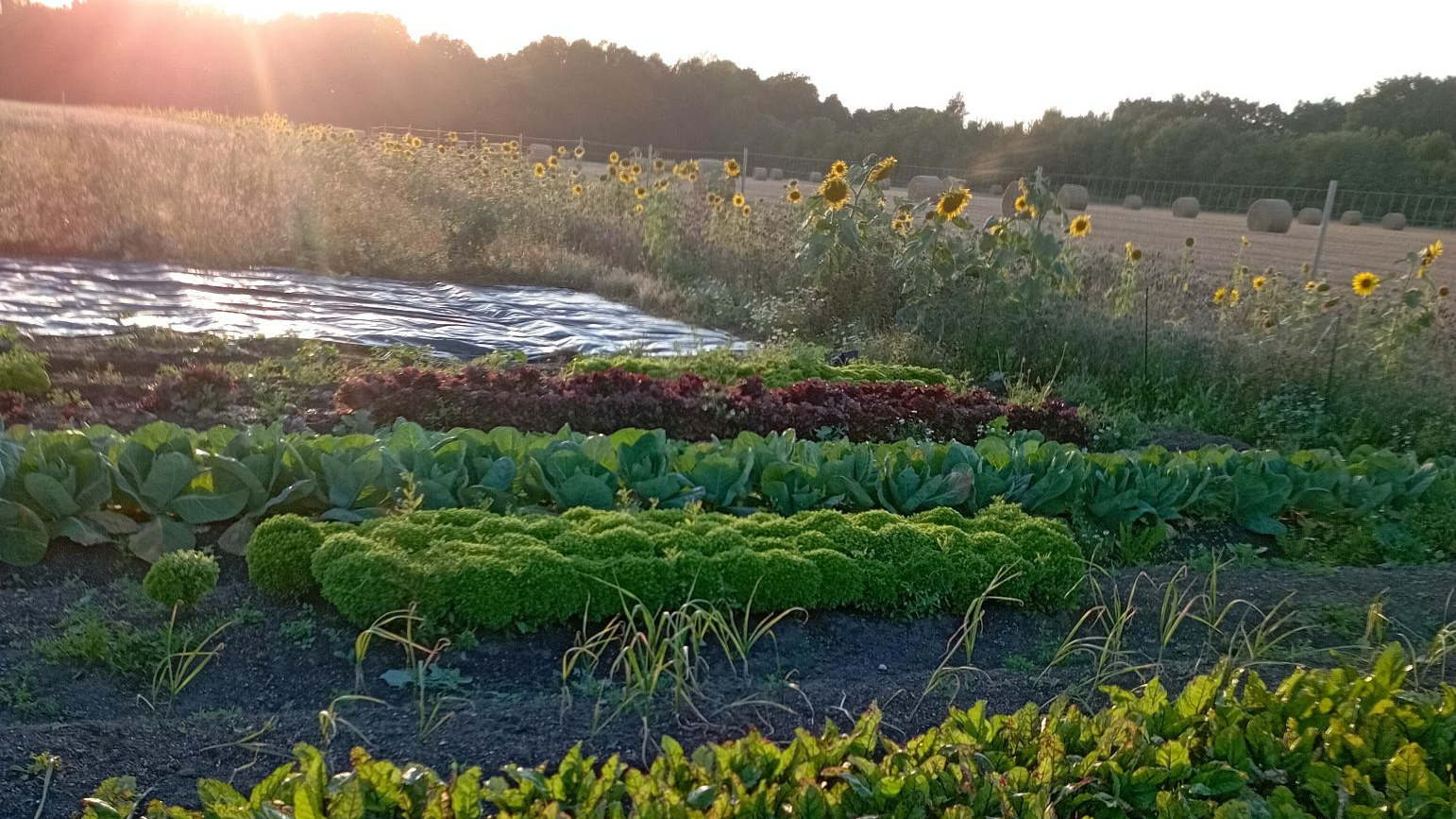
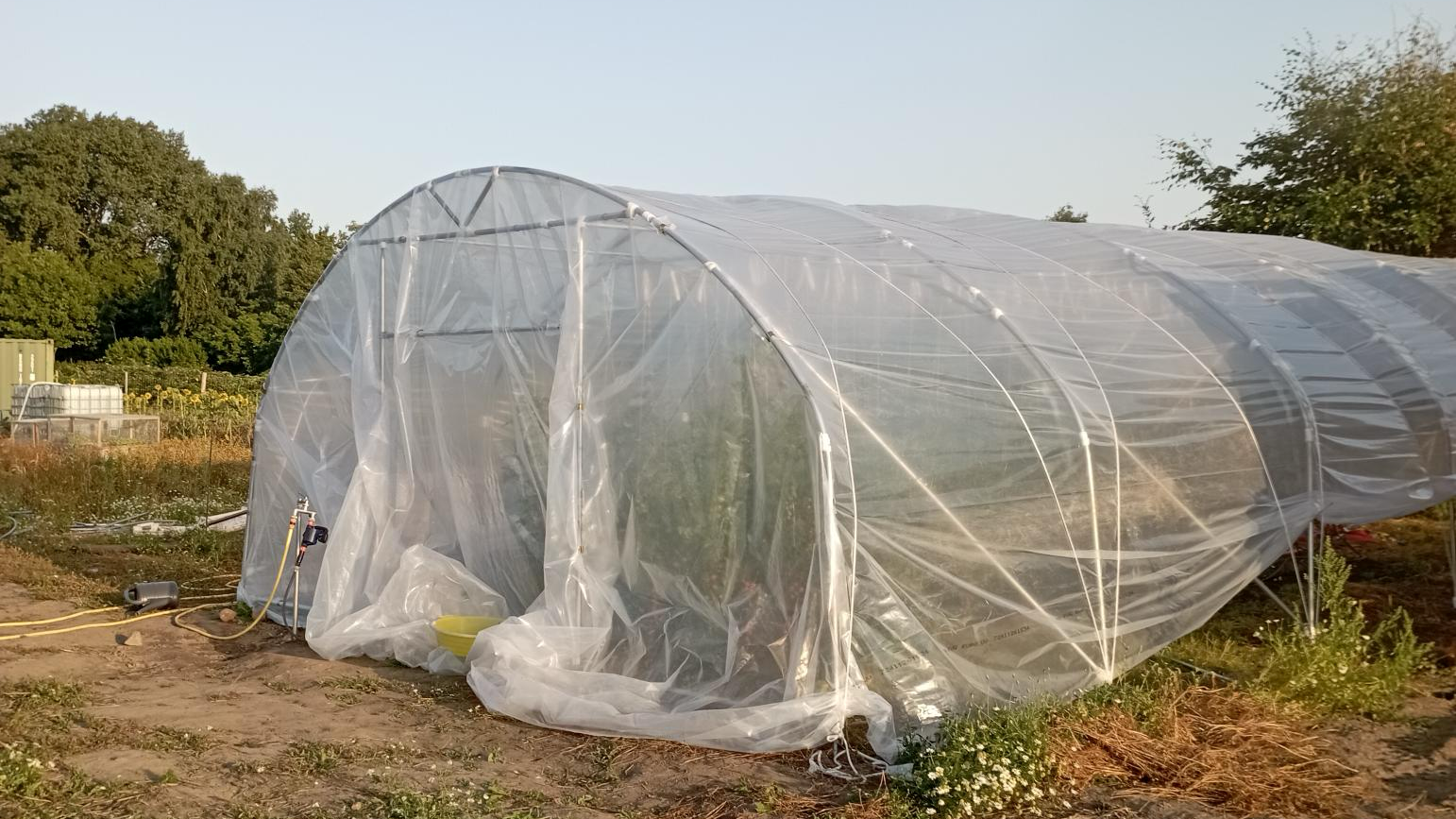
Bee colonies will move to a part of the area next year. In preparation for this, a flower mixture was test-sown on the designated area, but it has only grown moderately. An alternative is now being sought so that the bees will find a diverse range of flowering resources next year.
The freshly sown lawn on the community area has grown well – it will soon serve us as a green place for exchange and events. More detailed insights into the developments on the test area will follow shortly as part of our field diary.
